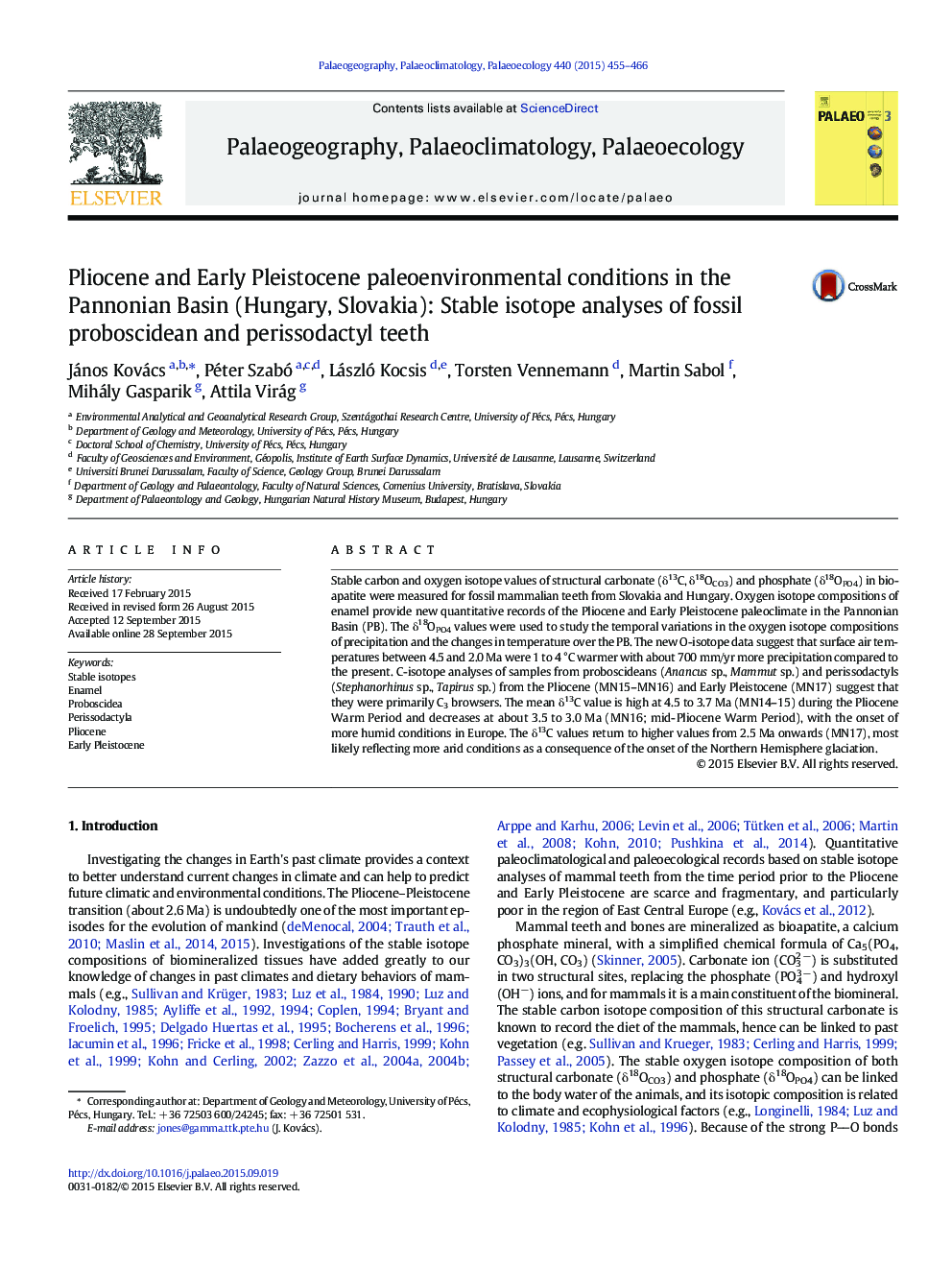| Article ID | Journal | Published Year | Pages | File Type |
|---|---|---|---|---|
| 6349544 | Palaeogeography, Palaeoclimatology, Palaeoecology | 2015 | 12 Pages |
Abstract
Stable carbon and oxygen isotope values of structural carbonate (δ13C, δ18OCO3) and phosphate (δ18OPO4) in bio-apatite were measured for fossil mammalian teeth from Slovakia and Hungary. Oxygen isotope compositions of enamel provide new quantitative records of the Pliocene and Early Pleistocene paleoclimate in the Pannonian Basin (PB). The δ18OPO4 values were used to study the temporal variations in the oxygen isotope compositions of precipitation and the changes in temperature over the PB. The new O-isotope data suggest that surface air temperatures between 4.5 and 2.0 Ma were 1 to 4 °C warmer with about 700 mm/yr more precipitation compared to the present. C-isotope analyses of samples from proboscideans (Anancus sp., Mammut sp.) and perissodactyls (Stephanorhinus sp., Tapirus sp.) from the Pliocene (MN15-MN16) and Early Pleistocene (MN17) suggest that they were primarily C3 browsers. The mean δ13C value is high at 4.5 to 3.7 Ma (MN14-15) during the Pliocene Warm Period and decreases at about 3.5 to 3.0 Ma (MN16; mid-Pliocene Warm Period), with the onset of more humid conditions in Europe. The δ13C values return to higher values from 2.5 Ma onwards (MN17), most likely reflecting more arid conditions as a consequence of the onset of the Northern Hemisphere glaciation.
Related Topics
Physical Sciences and Engineering
Earth and Planetary Sciences
Earth-Surface Processes
Authors
János Kovács, Péter Szabó, László Kocsis, Torsten Vennemann, Martin Sabol, Mihály Gasparik, Attila Virág,
